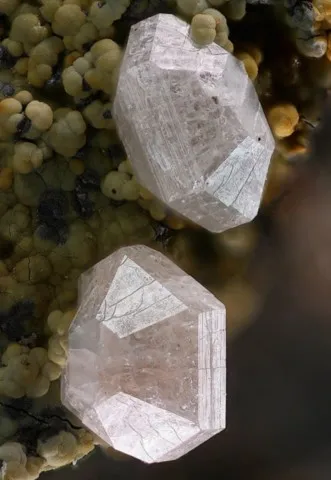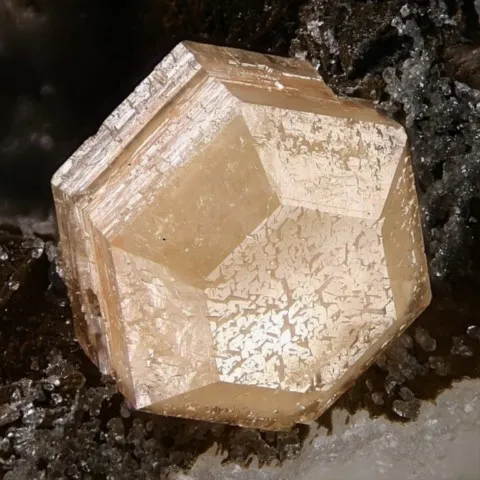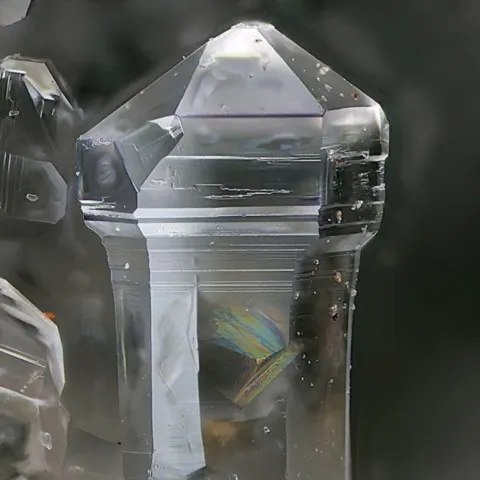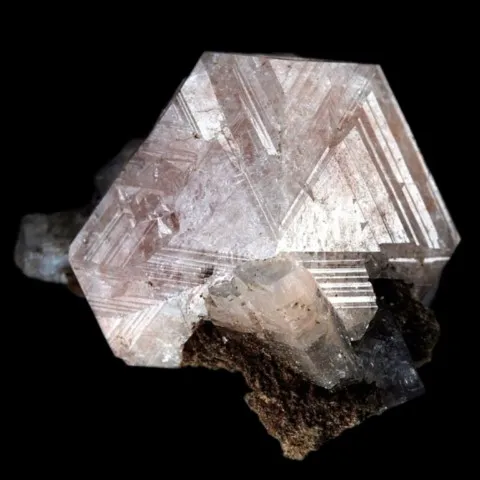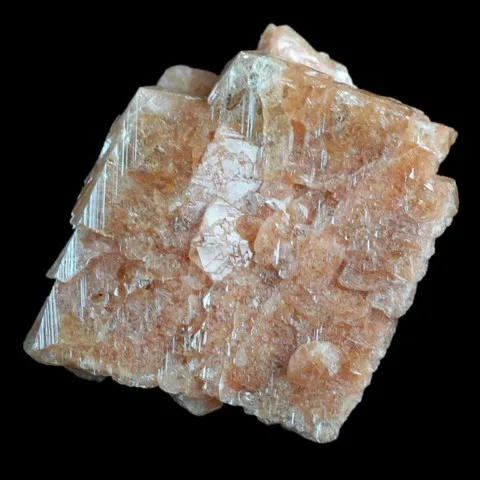GMELINITE
Class : Silicates
Subclass : Tectosilicates
Crystal system : Hexagonal
Chemistry : (Na2,Ca)Al2Si4O12 6H2O
Rarity : Uncommon
Gmelinite is a sodium zeolite found in basalts and associated plutonic rocks, as well as in sodium pegmatites of alkaline rocks. Gmelinite is also known in basalt alteration products. It was named in honor of the German mineralogist and chemist Cristian Gottlob Gmelin, professor at the University of Tübingen (Germany). Gmelinite occurs in crystals of varied facies : pyramidal, tabular, rhombohedral, sometimes in hexagonal lamellae or short prisms, with frequently striated faces. Intergrowths with chabazite are not rare, forming buildings of 4 cm. Gmelinite is variously colored : from white to yellowish, greenish, orange to salmon, sometimes brown.
Main photo : Gmelinite from Cattignano quarry, San Giovanni Ilarione, Verona, Italy © Volker Betz
Gmelinite in the World
Twinning
Twins are known on {10-11}.
Fakes and treatments
No fakes recorded for this mineral species.
Hardness : 4.5
Density : 2.11
Fracture : Irregular
Streak : White
TP : Translucent to transparent
RI : 1.477 to 1.485
Birefringence : 0.008
Optical character : Uniaxial +/-
Pleochroism : Low
Fluorescence : blue to white
Solubility : Hydrochloric acid
Magnetism : NoneRadioactivity : None

